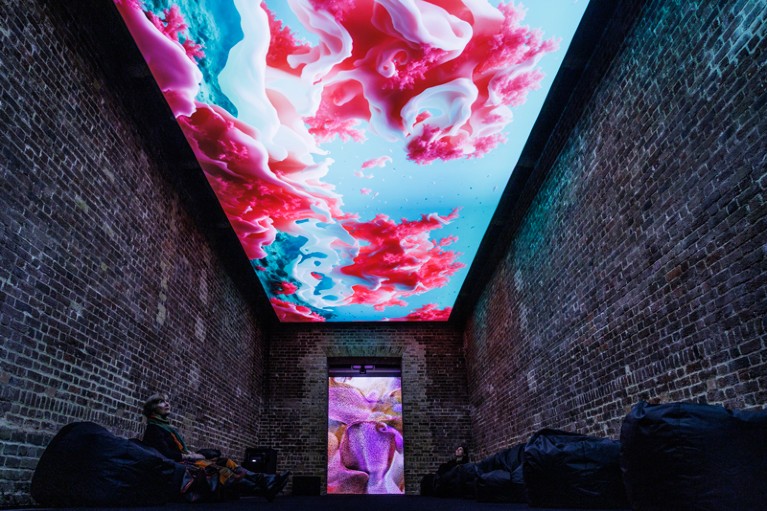You have full access to this article via your institution.
Hello Nature readers, would you like to get this Briefing in your inbox free every day? Sign up here.
The slow consumption of a star by a black hole (artist’s illustration) unleashed a blaze of light that remained bright even after five years. Credit: Caltech/R. Hurt (IPAC)
Scientists have described a ‘superflare’ from a distant black hole — the most luminous burst of light ever detected from such an object. At its peak, the blaze shone more than 10 trillion times brighter than the Sun and was probably triggered by the black hole’s gravity shredding a star that was at least 30 times as massive as the Sun. The flash also seems to be the farthest ever detected at roughly 10 billion light years away from our Solar System.
Nature | 4 min read
Reference: Nature Astronomy paper
At a pandemic-research conference this week, immune researcher Runhong Zhou presented results from early studies of a dual-target antibody treatment for H5N1 avian influenza in which the treatment neutralized multiple live strains of the virus. Zhou’s research is among a host of antibody therapies in the works, such as those to treat HIV through antibody-driven reactivation of dormant immune cells. Antibodies could also boost the efficacy of other treatments such as vaccines, researchers say, by binding to areas of a virus that don’t mutate.
Nature | 5 min read
Entrepreneur Jared Isaacman has been re-nominated by US President Donald Trump for the post of NASA administrator, five months after the original nomination was withdrawn. Isaacman has been both passenger and bill-payer on private SpaceX missions, and lost the nomination after SpaceX founder Elon Musk had an explosive falling-out with Trump. If confirmed, Isaacman will inherit an ambitious timeline to return to the Moon and rock-bottom morale following the firing or departure of thousands of NASA employees.
The science and technology sector in the United Kingdom is “bleeding out” because of long-standing failures to scale and retain the economic benefits of research and development, says a report by a committee of lawmakers. The group also calls out high visa fees for scientists as “an absurd act of national self-harm”. Among other things, the report recommends that the government increase investment into the sector by pension funds and a supercharged sovereign-wealth fund.
Reference: House of Lords Science and Technology Committee report
Features & opinion

This AI-generated work, exhibited by Refik Anadol at the Serpentine North Gallery in London, was made from images of coral reefs and rainforests.Credit: Dan Kitwood/Getty
From poetry and music to research proposals, some AI-generated content is indistinguishable from human work, which challenges the standard scientific definitions of creativity. No matter how impressive the models become, however, should they ever be described as truly creative? Researchers on both sides argue that the stakes are high — not just for AI’s creative potential, but for our own.
Nature | 10 min read
Today I’m planning to enjoy the ‘supermoon’ — a particularly big and bright one as the full moon coincides with the satellite’s perigee — while doing a bit of night swimming. I might also spot some fireworks, as remember, remember it’s Guy Fawkes Day round these parts today, too.
Thanks for reading,
Flora Graham, senior editor, Nature Briefing
With contributions by Jacob Smith
• Nature Briefing: Careers — insights, advice and award-winning journalism to help you optimize your working life
• Nature Briefing: Microbiology — the most abundant living entities on our planet — microorganisms — and the role they play in health, the environment and food systems
• Nature Briefing: Anthropocene — climate change, biodiversity, sustainability and geoengineering
• Nature Briefing: AI & Robotics — 100% written by humans, of course
• Nature Briefing: Cancer — a weekly newsletter written with cancer researchers in mind
• Nature Briefing: Translational Research — covers biotechnology, drug discovery and pharma

